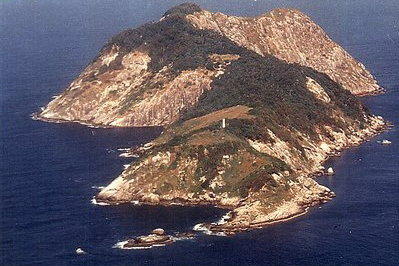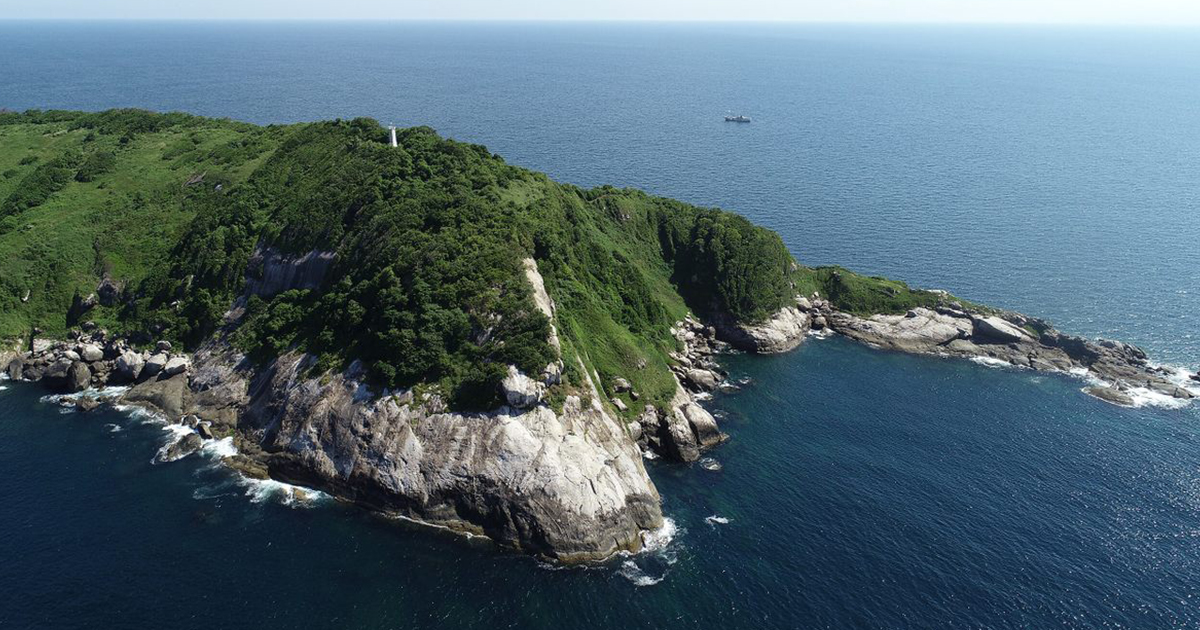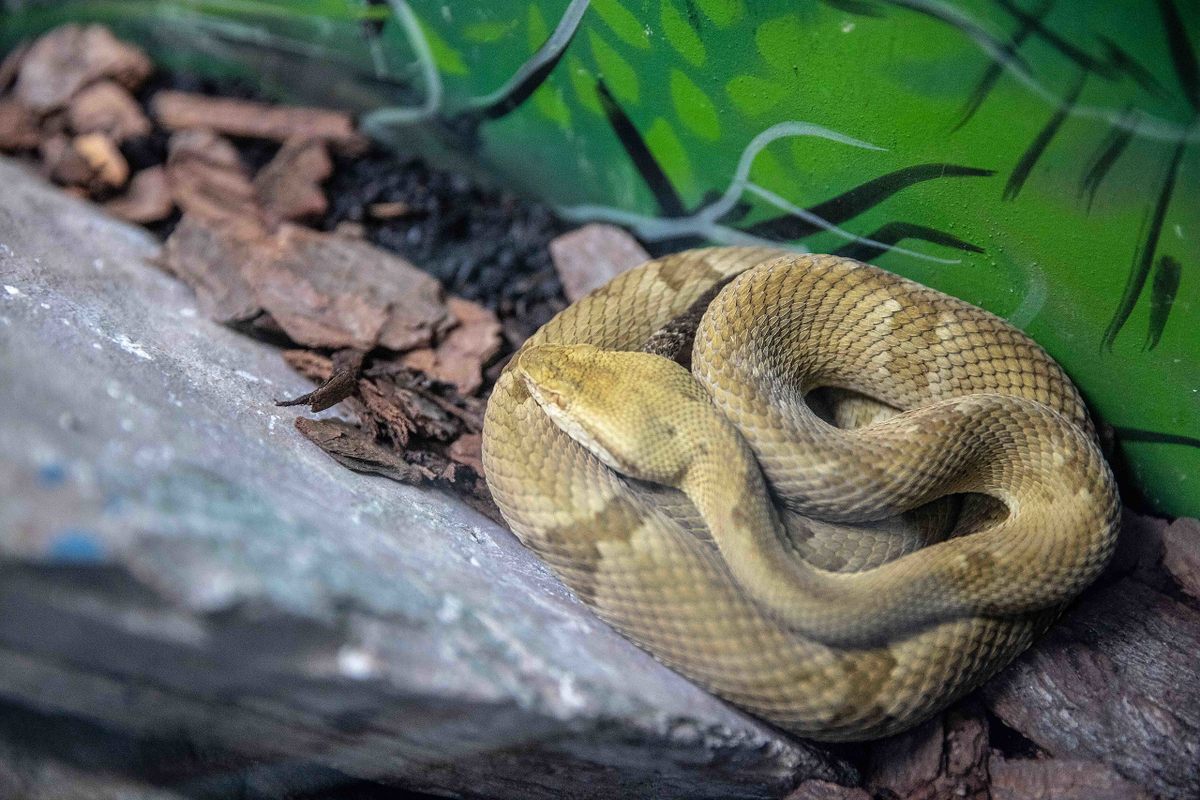Snake Island: The Deadliest Place on Earth

Isla da Queimada Grande, also known as Snake Island, is one of the world's most dangerous places. Located off the coast of Brazil, this island is home to thousands of one of the most venomous snakes in the world, the golden lancehead pit viper. Their venom is five times more potent than their mainland cousins, making them extremely dangerous.
Let's dive deeper into the mysteries of this fascinating and dangerous island.
Where is Snake Island?
 Skipping Stones Literary Magazine
Skipping Stones Literary Magazine
Snake Island is situated approximately 25 miles off the coast of São Paulo, Brazil. The island stretches over 430,000 square meters, consisting mainly of rocky terrain and sparse vegetation.
Its isolation has resulted in a unique ecosystem, dominated by the deadly lancehead snakes.
Which snakes live on the island?
 Nayeryouakim, Wikimedia Commons
Nayeryouakim, Wikimedia Commons
This island's main inhabitant, the golden lancehead pit viper, is an extremely venomous snake found nowhere else on Earth.
Their venom is estimated to be five times more potent than their mainland cousins, and it has evolved to be faster-acting, quickly incapacitating their prey, which primarily includes birds. The snake's isolation led to inbreeding, resulting in this unique venomous adaptation.
How many snakes are there on the island?
It's difficult to pin down an exact number of snakes on Snake Island due to its size and the dense vegetation, but estimates suggest a very high density of snakes. Some estimates claim there could be one snake for every square meter in certain parts of the island, but these are just approximations.
Overall, it's believed that the island is home to between 2,000 to 4,000 golden lancehead pit vipers. However, these figures vary among different sources and can change due to various factors like food availability, weather patterns, and other ecological factors.
The island's inaccessibility and the dangers associated with studying such a dense snake population also make accurate surveys challenging.
How did the snakes get there?
Historical accounts suggest that Snake Island was once connected to mainland Brazil, allowing snakes to settle there. Legend has it that pirates buried a treasure on the island, leaving the snakes as guardians.
However, these tales haven't been verified. Human visits to the island are now heavily restricted, and only scientists with a special permit are allowed, mainly due to the potential risks associated with the venomous inhabitants.
How do the snakes survive?
The golden lancehead pit vipers on Snake Island have adapted to their isolated environment in remarkable ways to ensure their survival:
- Diet: The primary food source for these snakes is birds. Migratory birds use the island as a resting point, which provides the snakes with an opportunity to prey on them. By targeting these birds, the snakes obtain necessary nutrients and sustenance.
- Evolutionary Adaptations: Due to the limited range of prey on the island, the venom of the golden lancehead viper has evolved to become about three to five times more potent than that of its mainland counterparts. This highly toxic venom ensures that the snake can quickly immobilize and digest the birds, making the most of every opportunity to feed.
- Reproduction: These snakes reproduce via ovoviviparity, meaning they give birth to live young rather than laying eggs. This method ensures a higher survival rate for the young snakes, as they're immediately mobile and can start hunting without the vulnerable phase of being in an egg.
- Limited Predators: On the island, the golden lancehead vipers have few natural predators, which is one reason for their high population density. This lack of predators allows them to dominate the island.
- Cannibalism: While it's not their primary mode of sustenance, these snakes have been known to resort to cannibalism in situations of scarce food resources. Larger vipers might prey on smaller ones if other food sources are not available.
Why is Snake Island protected?
Despite its fearsome reputation, Snake Island and its snake population are of significant scientific interest. The golden lancehead's venom is being studied for potential medicinal uses, including heart disease treatments.
The Brazilian Navy now oversees the island, ensuring its protection and conservation. It's also crucial to maintain the snake's isolation to prevent it from becoming an invasive species elsewhere.
Dangerous Allure
While Snake Island is off-limits to tourists, it still holds a mysterious allure for many. Television shows and documentaries have highlighted its dangers, emphasizing the high density of venomous snakes. Still, beyond the danger, it's a critical ecological and research hub, showcasing how nature can evolve in isolation.
Final Thoughts
 Prefeitura Municipal de Itanhaém, Wikimedia Commons
Prefeitura Municipal de Itanhaém, Wikimedia Commons
Snake Island is a testament to the adaptive powers of nature, with the golden lancehead pit viper evolving in a unique ecosystem. While its dangers are real and well-documented, it remains an essential location for research and conservation, reflecting the intricate balance of nature.












